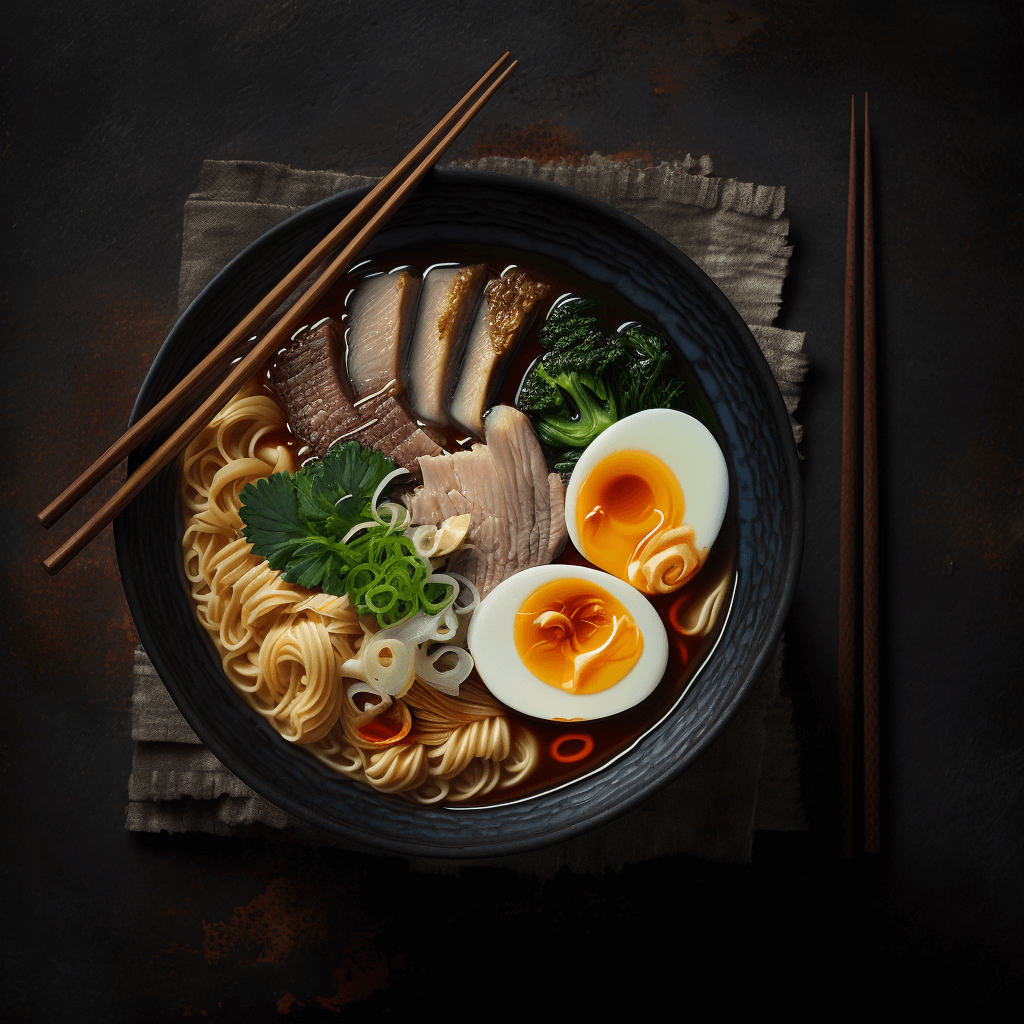
Ramen is a popular Japanese dish that has become one of the main symbols of Japanese cuisine. It consists of wheat noodles, meat or fish broth, marinated eggs, pork, nori, greens, and other ingredients. Interestingly, this dish has roots deep in Chinese culture. Let's explore the history of this remarkable soup.
It is believed that the homeland of ramen is China. In the 17th century, the first mention of noodles made from wheat and eggs appeared. This type of noodle became the basis for various soups and eventually gained immense popularity throughout the Chinese continent. However, it was Japan that managed to transform simple noodles into a true culinary masterpiece.
There are different versions of how ramen arrived in Japan. One theory is that at the beginning of the 20th century, Chinese merchants brought noodles to the islands. The noodles then became known as "shina-men" (支那麺) or "Chinese noodles." Over time, the Japanese began to adapt the recipe to their culture, adding various ingredients and perfecting the broth.
In 1910, the first noodle shop opened in Tokyo, offering soup based on Chinese noodles. The owner, a Chinese immigrant, incorporated local ingredients into the soup and created a dish that would become the predecessor of modern ramen. After the war, thanks to American wheat, ramen became an accessible and inexpensive source of nutrition for a devastated country.
Over time, each region of Japan began to develop its variations of ramen. For example, in the north, where the climate is colder, people preferred richer and thicker broths, while in the south, lighter and clearer broths were favored. Today, there are many different types of ramen, distinguished by the composition of the broth, noodles, and toppings. Among the most famous types of ramen are miso ramen, shoyu ramen, shio ramen, and tonkotsu ramen.
Miso ramen is a variation of soup based on miso paste, which gives it thickness and a rich taste. Shoyu ramen is characterized by soy broth and a dark color. Shio ramen is the lightest type of ramen with a clear, salty broth. Tonkotsu ramen is a variety of soup with a broth based on pork bones, which has a creamy texture.
In 1958, a significant event in the history of ramen occurred – the invention of instant noodles. This discovery was made by the Japanese entrepreneur Momofuku Ando. Instant noodles quickly spread worldwide, making ramen known in various corners of the planet.
Today, ramen is not just a soup but an entire culture. In Japan and many other countries, there are ramen bars that serve a variety of this dish. Moreover, ramen has become popular among takeout food enthusiasts, thanks to the possibility of quick preparation and packaging. Ramen has also become a protagonist in numerous films, anime, and manga, emphasizing its significance in Japanese culture.
An important aspect of ramen is the process of consumption. Traditionally, ramen is eaten hot, slurping the noodles and not being shy about making noise. The noise produced is considered a sign of respect for the cook and indicates that you enjoy the dish.
So, the history of ramen is a story of the influence of different cultures, their interaction, and adaptation of traditions. Ramen has become a symbol of Japanese cuisine and cultural heritage thanks to the Japanese ability to turn simple Chinese noodles into something unique and inimitable. Today, ramen can be found not only in Japan but also in many countries around the world, where it is present on the menus of numerous restaurants and cafes, as well as sold as instant noodles in stores.
Everyone who visits Japan wants to try ramen in the homeland of this dish. The variety of regional ramen variations makes it more than just a soup but also an object of gastronomic exploration and experience. This dish allows you to better understand Japanese culture, its peculiarities, and preferences.
Undoubtedly, ramen has become one of the most recognizable and popular dishes in the world. Its history of establishment and development testifies to the interaction of cultures and their mutual enrichment. Ramen continues to conquer the hearts of gourmets and travelers from all over the world, and its history inspires new culinary discoveries and creativity.
As we can see, ramen is a bright example of how culinary traditions can be adapted and modified, acquiring new flavors and forms. It is essential to remember our roots and respect the culture from which this dish originated while maintaining a creative approach and openness to new ideas. This is how ramen became a genuine culinary masterpiece that we can enjoy today.